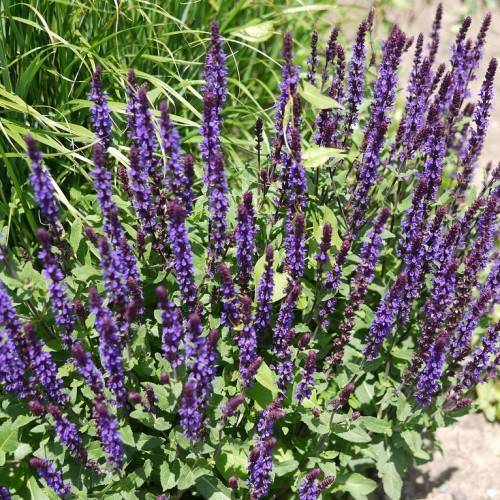
sage
Salvia nemorosa 'Caradonna'
Cycle:
Herbaceous Perennial
Watering:
Minimum
Hardiness Zone:
4 - 8
Flowers:
Flowers
Sun:
Full sun
Leaf:
Yes
Growth Rate:
High
Maintenance:
Low
Drought Tolerant:
Yes
Salt Tolerant:
Yes
Care Level:
Medium
watering
For Sage (Salvia nemorosa 'Caradonna'), water the soil when it starts to feel dry - typically about 1-2 times a week. Make sure the soil is moist but not soggy. Allow the top 2-3 inches of soil to dry out between watering. Additionally, water the leaves and stems early in the morning to minimize mold growth on the foliage.
sunlight
Sage (Salvia nemorosa 'Caradonna') thrives in full sun, meaning that it needs 4-6 hours of direct sunlight per day. For optimal growth and flowering, it is important to provide this species enough direct sunlight, particularly during the spring and summer months when plants are actively growing. During the cooler months, partial shade is beneficial in preventing damage from cold temperatures. Additionally, it is important to note that in areas of high heat, providing afternoon shade can be beneficial for this species.
pruning
Pruning of Sage (Salvia nemorosa 'Caradonna') is best done in late spring or early summer. For best results, prune the plant back by about 1-third of its total height. This will promote bushier growth and keep the plant from becoming too tall and gangly. Deadheading of the spent flowers is also recommended to keep the plant looking its best and extend the flowering season. Additionally, it is important to cut out any dead or weak stems to encourage healthier growth of the plant.
